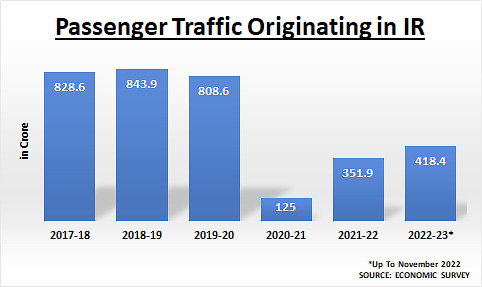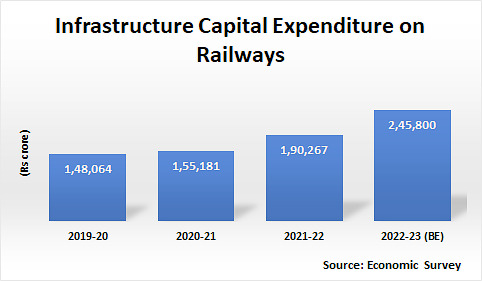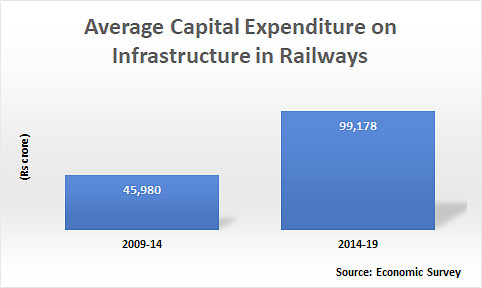
views
The Indian Railways (IR) is recovering from the impact of the coronavirus pandemic as its passenger traffic load increased more than three times since 2020-21, though it remains nearly half of the pre-Covid numbers, according to the Economic Survey 2022-23 data analysed by News18.
The report said that the passenger traffic originating in IR was 809 crore in 2019-20, the pre-Covid period. With the outbreak of the infection, the passenger load dropped to 125 crore in 2020-21. During 2021-22, the number increased to 351.9 crore.
“During the current financial year, passenger traffic has seen further strong growth with the number of originating passengers already hitting 418.4 crore (up to November 2022),” the report said, adding that enhanced mobility across the country and demand for faster and competitive trains will assist the growth in passenger traffic in the coming years.

The report said IR is a major transport infrastructure, that can very well be called India’s lifeline, and which had a huge role to play in national integration and regional development. With over 68,031 route km, IR is the fourth-largest network in the world under single management.
Massive increase in capital expenditure
According to the Economic Survey, the capital expenditure (Capex) on infrastructure in railways has received a tremendous boost since 2014. It has seen a continuous increase in the last four years with Capex (B.E.) of Rs 2.5 lakh crore in FY23, up by around 29% compared to the previous year. The average capex has more than doubled between 2009-14 and 2014-22 period, the survey shows.
The report reveals that the average capex outlay on railway electrification has jumped by nearly four times between 2009-14 and 2014-22.


“During the current financial year (till December 12, 2022), IR has already completed 2022 Track Kilometres (TKM) which includes 109 TKM of New Line, 102 TKM of Gauge Conversion and 1811 TKM of multi-tracking projects. To understand the pace of progress, it may be noted that during last financial year this figure was reached only during the first week of March,” it reads.
Average commissioning up 70%; six-fold rise in electrification
Between 2014 and 2022, across IR, 20,628 km sections have been commissioned at an average of 2,579 km/year. This included 3,970 km new line, 5,507 km gauge conversion, and 11,151 km doubling. This is about 70% more than
the average commissioning during 2009-14, 1,520 km/year, the report says.
“Further, during the last eight years (2014-22), 30,446 route kilometres (RKM) have been electrified compared to an electrification of 4,698 RKM during the previous eight-year period, a more than six-fold increase,” it says.
Read all the Latest India News here




















Comments
0 comment